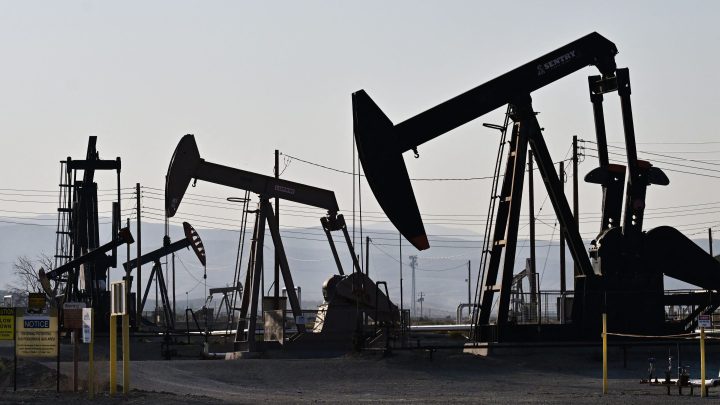
U.S. oil producers have increased production, frustrating OPEC’s efforts to prop up oil prices
U.S. oil producers have increased production, frustrating OPEC’s efforts to prop up oil prices

There’s a surprise in the federal Energy Information Administration’s latest forecast of U.S. oil production: Producers pumped out nearly 13.5 million barrels a day in November — almost a million barrels a day more than what the EIA predicted a year ago.
U.S. oil production has been ramping up at kind of an awkward time for the global oil cartel.
“OPEC, together with its allies, OPEC+, have been trying to ensure that there is a limited amount of oil in the market to hit a higher target price,” said Amy Myers Jaffe, who runs the Energy, Climate Justice and Sustainability Lab at NYU.
OPEC’s been cutting production for a while, she said. This time last year, those cuts helped push oil prices above $80 a barrel. Thing is, American producers noticed.
“Everybody in the C-Suite of all the fracking companies thought, ‘Jeez, if they’re successful, I can make a lot of money, and so I’m going to drill more,’” Jaffe said.
And so they did. U.S. production rose, and U.S. producers have been getting more oil out of every rig they own, according to Tom Seng, a professor of energy finance at Texas Christian University.
“Rig count is down, but we’re at record production levels,” he said. “So that tells you they’re being much more efficient with the resources that they have.”
There have also been recent mergers in the fracking sector. When they make those deals, Seng said that companies like to beef up their revenue.
“They’re going to have to justify those acquisitions. And the way you do that is you get out there, you develop, you increase production, so that your revenue from these properties goes up,” he said.
All of this oil from the U.S. is a big reason why oil prices have been falling in recent weeks.
Consumers are noticing, said Matt Smith at the data and analytics firm Kpler. “Because we’re seeing prices at the pump at the national average get down to $3 a gallon, which is excellent ahead of the Christmas period here.”
If prices keep falling, demand for oil could pick up. But Smith added that we shouldn’t forget that the Federal Reserve’s rate hikes have been cooling down the economy, and that will probably continue into next year. So, oil demand could slow down.
“So as that demand gets ratcheted down a bit, that could weigh on prices further,” he said.
Either way, if oil prices stay around where they are now, Smith said that U.S. producers will keep on drilling.
There’s a lot happening in the world. Through it all, Marketplace is here for you.
You rely on Marketplace to break down the world’s events and tell you how it affects you in a fact-based, approachable way. We rely on your financial support to keep making that possible.
Your donation today powers the independent journalism that you rely on. For just $5/month, you can help sustain Marketplace so we can keep reporting on the things that matter to you.











